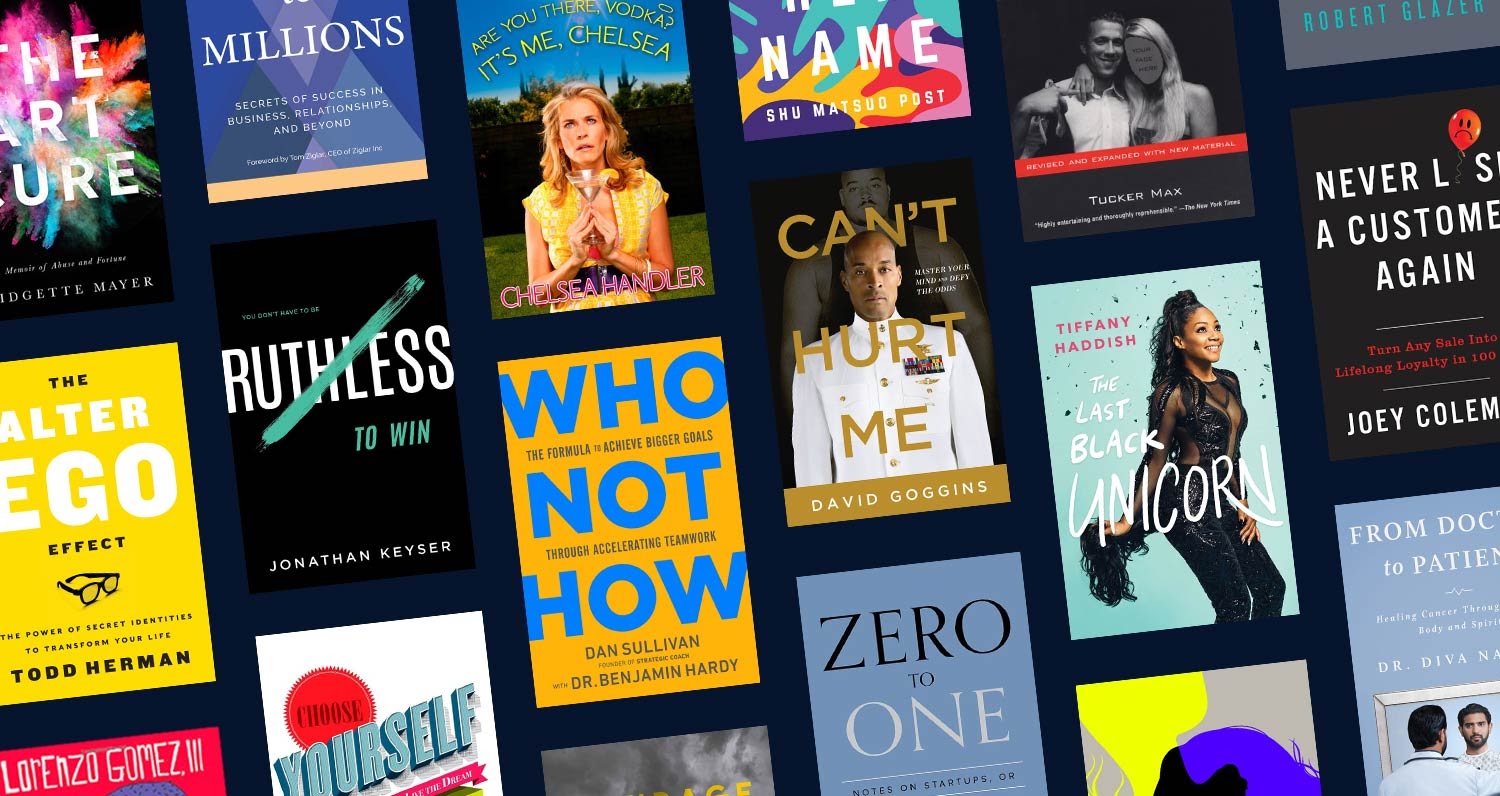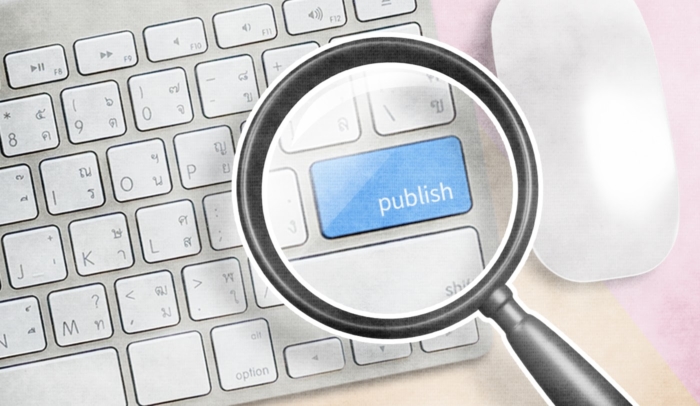When people ask me, “how do I find a publisher for my book?”, they’re usually talking about a traditional publisher, like Random House or HarperCollins.
But most of them don’t really know what that means (or what they’re asking).
Traditional publishing has been the default model in the publishing world for well over 100 years, so it’s what most people think of first. And unless they do their research, they aren’t usually aware of the alternative: self-publishing.
Most people don’t realize that self-publishing is the better option for 98% of Authors.
In fact, it’s the only option for the vast majority of Authors. To get a book deal with a traditional publisher, you have to convince them you can sell around 25,000 copies in the first month—without any help from them.
Most people can’t do that because it requires having a huge built-in audience. But that’s fine—you can self-publish and still reap the benefits of publishing a book.
Below, I’ll summarize the difference between traditional and self-publishing. But this post will focus on self-publishing options because it’s the best path for most people.
Below you’ll learn:
- The difference between traditional and self-publishing
- The advantages and disadvantages of self-publishing
- The 2 main approaches to self-publishing
- How Scribe helps nonfiction Authors self-publish their books
Scribe has helped thousands of nonfiction Authors self-publish, including massive bestsellers like David Goggins and Nassim Taleb. To learn more, check out our Scribe Publishing Service, or schedule a consult to speak with one of our Authors Strategists.
The Difference Between Traditional and Self-Publishing
As I explain in my post on self-publishing vs. traditional publishing, there’s one core difference between the 2 options:
When you traditionally publish, the publisher (or “publishing house”) owns the book. When you self-publish, you own the book.
That’s it. The rest of the differences are secondary.
I’ve written about them at length, so I won’t go into them here. If you want to understand the differences deeply, read my post on book publishing options.
The rest of this post is for the 98% of people for whom self-publishing is the clear choice.
The Advantages and Disadvantages of Self-Publishing
Before I get into specifics about how to approach self-publishing, it’s worth understanding its advantages and disadvantages first.
This way, you have clarity on what to expect if you choose to self-publish. And you have the context needed to choose the self-publishing option that’s right for you.
The Advantages of Self-Publishing
1. Full ownership of rights and royalties: Aside from distribution platforms like Amazon taking a cut of book sales, you don’t have to split your royalties, profits, or ownership rights with anyone.
2. Full creative control: You have the final say on every creative decision involved with your book. You don’t have to answer to or negotiate with other stakeholders (like you do in traditional publishing).
3. Full marketing control: You can market your book in any way you’d like. For example, you can syndicate it to your email list or publish it piece by piece on your blog. You can give copies away for free. You can form any promotional partnership that you want. You have complete control over how you market your book.
4. Fast to market: Self-publishing a book can be done in as little as a few months. You have the option to move fast if you want to.
5. No gatekeepers: You don’t need to find a literary agent to represent you. And you don’t need to develop a book proposal to pitch to traditional publishers. You also don’t need acceptance or permission from anyone to publish your book.
The Disadvantages of Self-Publishing
1. Potential for an unprofessional book: This is one of the major problems with most self-published books. People generally have no idea how to do it professionally (especially if they’re working on their first book).
As a result, most of the time their book covers, book descriptions, and other publishing assets come out looking unprofessional. And the success of their book (and reputation) often suffers because of it.
2. Challenging and time-consuming to get right: It takes many different skills—and therefore many different people—to self-publish a book. You need a developmental editor, copy editor, photographer, graphic designer, and distributor. You also may want a marketing consultant and promotional partners.
To self-publish a professional quality book on your own, you have to find the right people for all of these jobs. That isn’t easy because it means vetting them when you’re not sure what to look for.
Then you have to explain what you want, manage, and work with them to see that the jobs get done correctly. And again, if you’re not intimately familiar with publishing, it’s hard to tell if they’re doing quality work.
3. Expensive to do well: The costs to hire people for all of these different jobs add up quickly if you choose quality freelancers and services. And if you try to cut costs, you’ll end up with an unprofessional book, which does more harm than good. You’d be better off not publishing a book at all.
4. Limited distribution: Generally speaking, bookstores and retailers don’t stock self-published books. So when you self-publish, you’re usually limited to distributing on Amazon and some of the independent book distributors like Ingram.
5. Difficult to access bestseller lists: Historically, most of the major bestseller lists haven’t recognized self-published books. This is beginning to change, but it’s still by far the norm.
The 2 Main Approaches to Self-Publishing
1. The DIY Approach
For a long time, there was one way to self-publish a nonfiction book: do it yourself.
If you wanted to self-publish, you had to:
- Manage the entire book publishing process on your own.
- Find, hire, and manage freelance designers and editors.
- Find and negotiate contracts with printing and distribution services.
- Figure out how to market and promote your book.
The DIY approach is still an option for anyone who wants to self-publish a book. The problem with it is that most people who want to self-publish know nothing about the publishing industry.
Crucial things like their book covers, interior layout, and editing are done poorly. As a result, they publish very unprofessional books and damage their reputation.
The ideas and writing in self-published books can be great. But if they’re put together poorly, no one will read—or care—about them.
And unprofessionalism is just one of the issues that can plague people who self-publish on their own. They also deal with several of the other disadvantages I listed above:
- The time and effort it takes to manage the whole process themselves.
- Difficulty in accessing bestseller lists.
- Limited distribution and access to bookstore placement.
In recent years, self-publishing services like Scribe have been created to solve these problems for both experienced and first-time Authors. This is the second approach available for people who want to self-publish.
2. Use a Done-for-You Self-Publishing Service
When you use a self-publishing service like Scribe Publishing, you get all of the advantages of self-publishing I described above. The difference is that we solve several of the biggest disadvantages that come with the DIY approach.
First, you’re guaranteed high-quality editing, book design, and book printing that gets you a professional quality book.
Second, instead of you managing the process on your own, we manage it for you. The time and effort it takes to find, hire, and manage freelancers is entirely lifted off your plate. And so is the time it takes to:
- Find and set up printing services.
- Set up distribution and royalties with services like Amazon.
- Copyright and catalog your book.
There are many more tasks involved in publishing a book that I haven’t covered here. And we handle them all for you.
Third, depending on which self-publishing company you choose, you can gain access to expanded distribution and bookstore placement.
And lastly, people who use a self-publishing service give themselves a shot at making bestseller lists. While it still requires selling more copies than those who traditionally publish, the professional quality makes it possible.
We’ve helped over two dozen self-published Authors get on every major bestseller list (New York Times, Wall Street Journal, USA Today). This is basically unheard of for people who self-publish their own book.
Which Self-Publishing Option is Best for You?
If you want to hire and manage your own team, the DIY approach is a valid option. There are many talented freelancers out there that you can hire to create a great book.
You just need to be aware of and accept the potential disadvantages I covered above.
On the other hand, if you want to ensure you end up with a professional quality book and you place a high value on your time, a self-publishing service is likely the best publishing route for you.
How Do the 2 Options Match Up on Cost?
In my post on book publishing costs, I walked through the costs of each element in the publishing process. When they’re all taken into account, the total costs break down like this:
- Low Quality: ~$2,000
- Acceptable: ~$5,000
- High Quality: ~$13,000
- Best Possible: ~$18,000
If you’re taking your book seriously—and the reputational risks of publishing an average or low-quality book—then you can expect to pay ~$13,000 to publish a high-quality book.
But these are the raw costs you’d pay if you take the DIY approach. They don’t account for the time and effort you need to spend managing the process.
This is why so many Authors are shocked when they learn about our publishing service, which costs $4,000/month for 6 months. It’s $24,000 total with a money-back guarantee.
And our team handles everything for you. Here’s how it works.
Scribe Publishing: Our Done-for-You Self-Publishing Service for Nonfiction Authors
When you use Scribe Publishing, we pair you with a publishing manager who supports you from your welcome call through to your book launch. You can think of them as your project manager who leads the coordination of the entire process.
In addition to your publishing manager, you’ll be assigned an editor who will work with you to refine the content of your book. They’ll help you understand exactly what steps you need to take to get your content ready for publication.
You’ll be assigned a designer who will work with you to develop a book cover you love.

Examples of book covers we’ve designed for our Authors.
And you’ll also be paired with an Author marketing strategist who will help you develop a marketing plan for your book’s first week promotions.
With Scribe Publishing, you get everything you need to complete a professionally published book (without needing to develop the know how or do the hard work on your own):
- Full manuscript evaluation
- Quality assurance
- Book cover design
- Interior layout
- Distribution and royalties setup
- eBook creation and distribution (for Kindle and other platforms)
- Paperback distribution (print-on-demand)
- Optional hardcover printing and management
- Copyrighting and cataloging
- Publishing imprint
- Author photo
- Author marketing materials
- Graphic inclusion
- 100 free copies
- Marketing strategy
- First week promotions (including social media posts, a scheduled podcast interview, graphics, and more)
To learn more, check out our Scribe Publishing Service, or schedule a consult to speak with one of our Authors Strategists.


